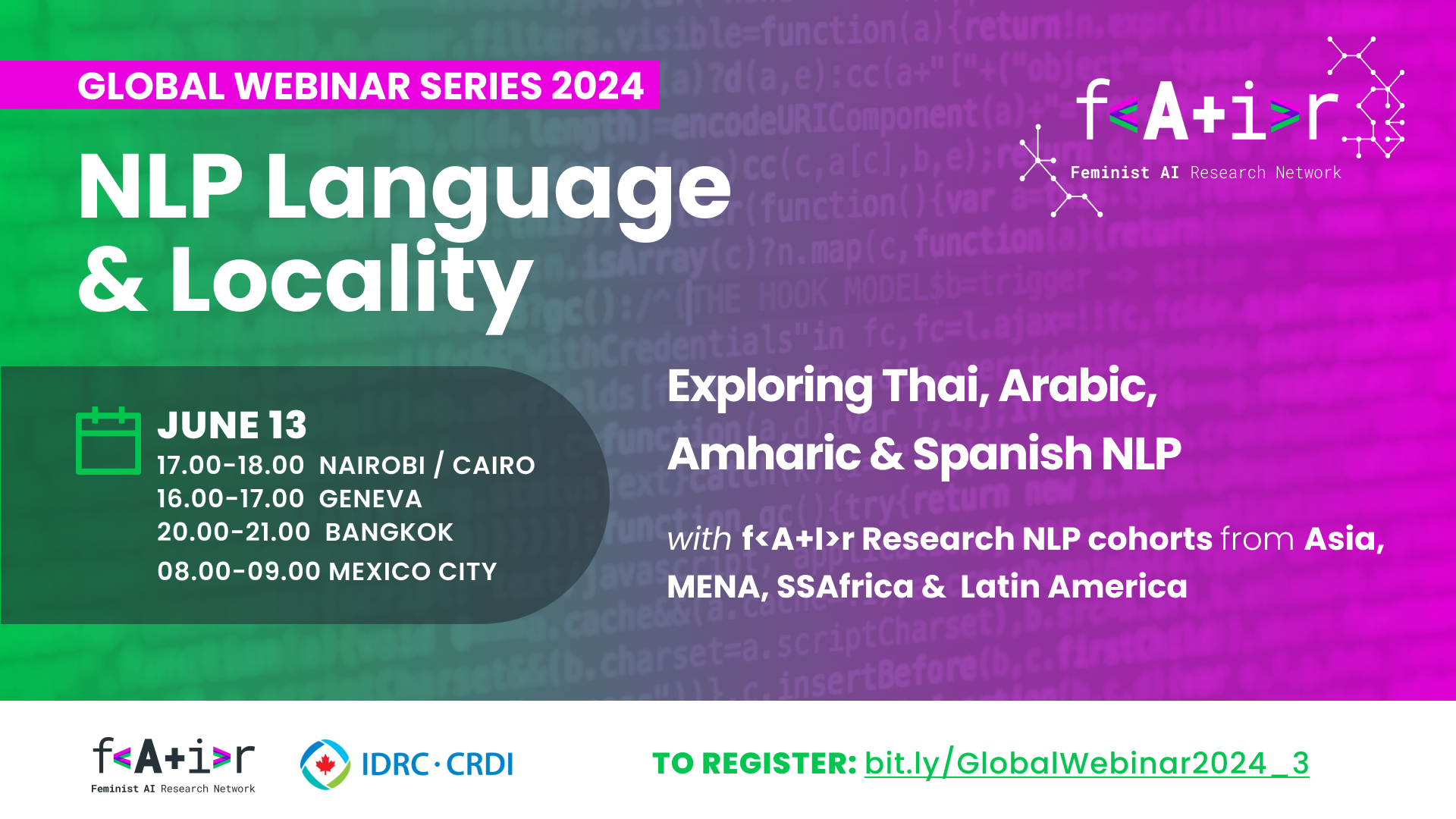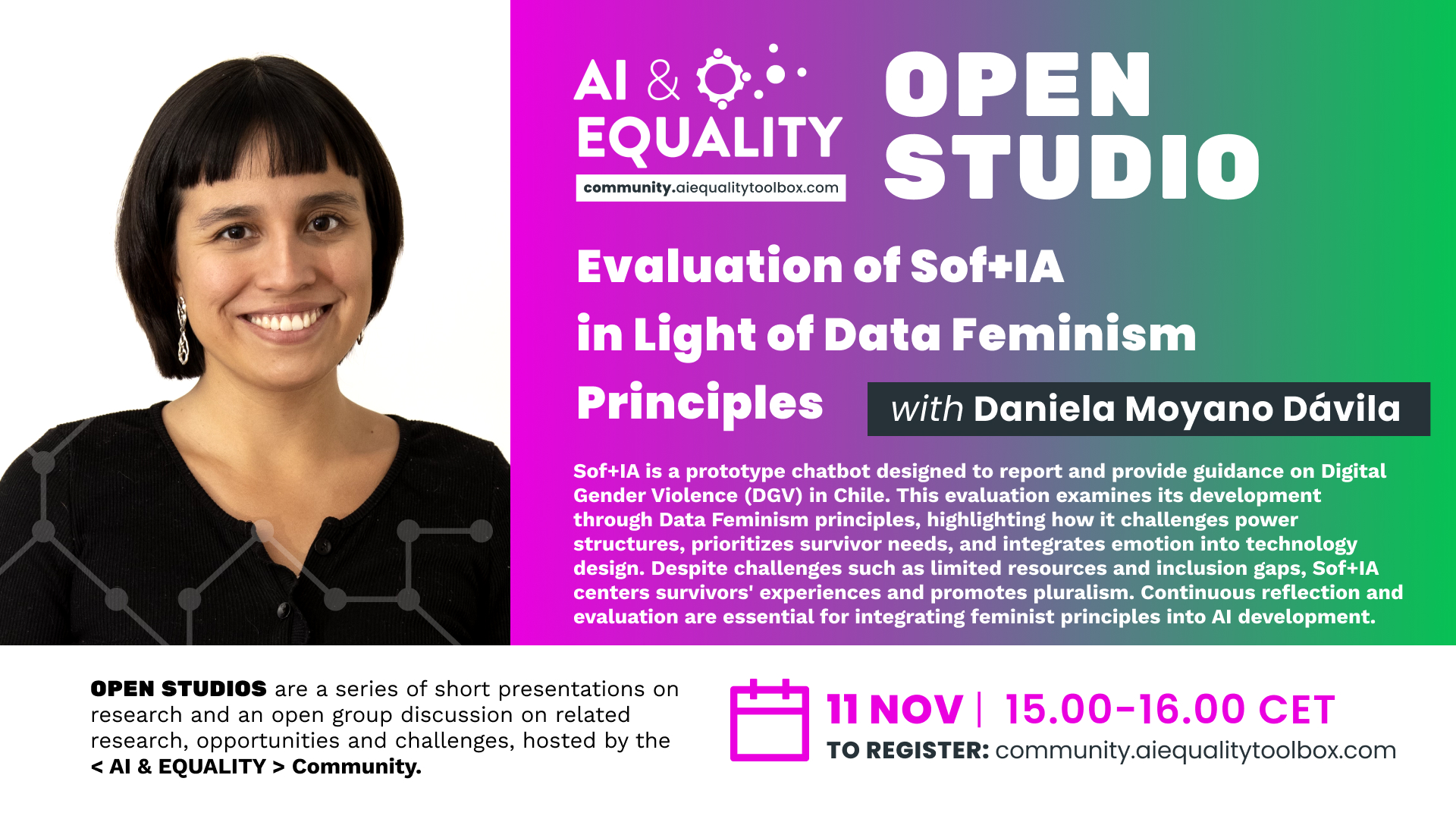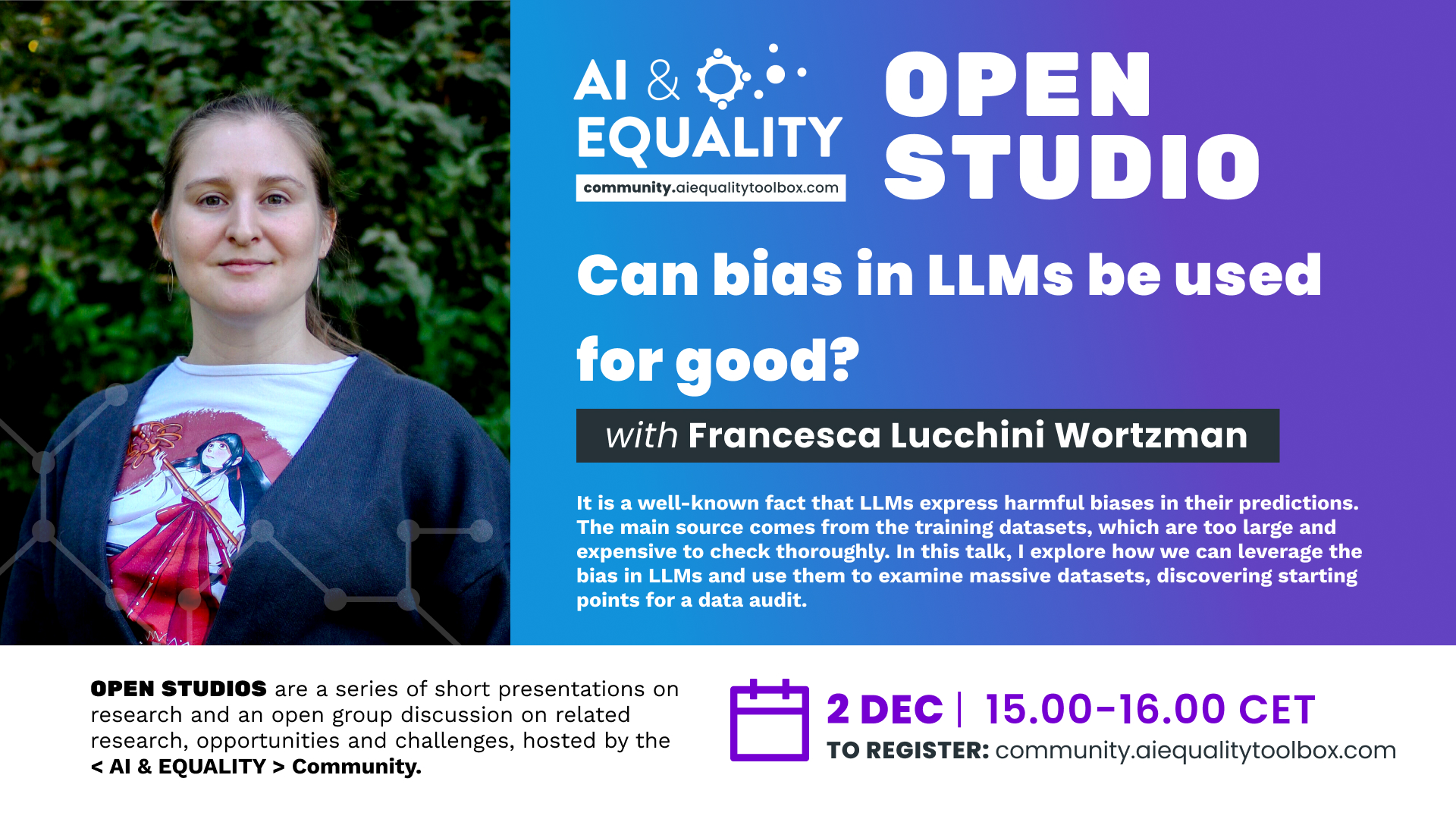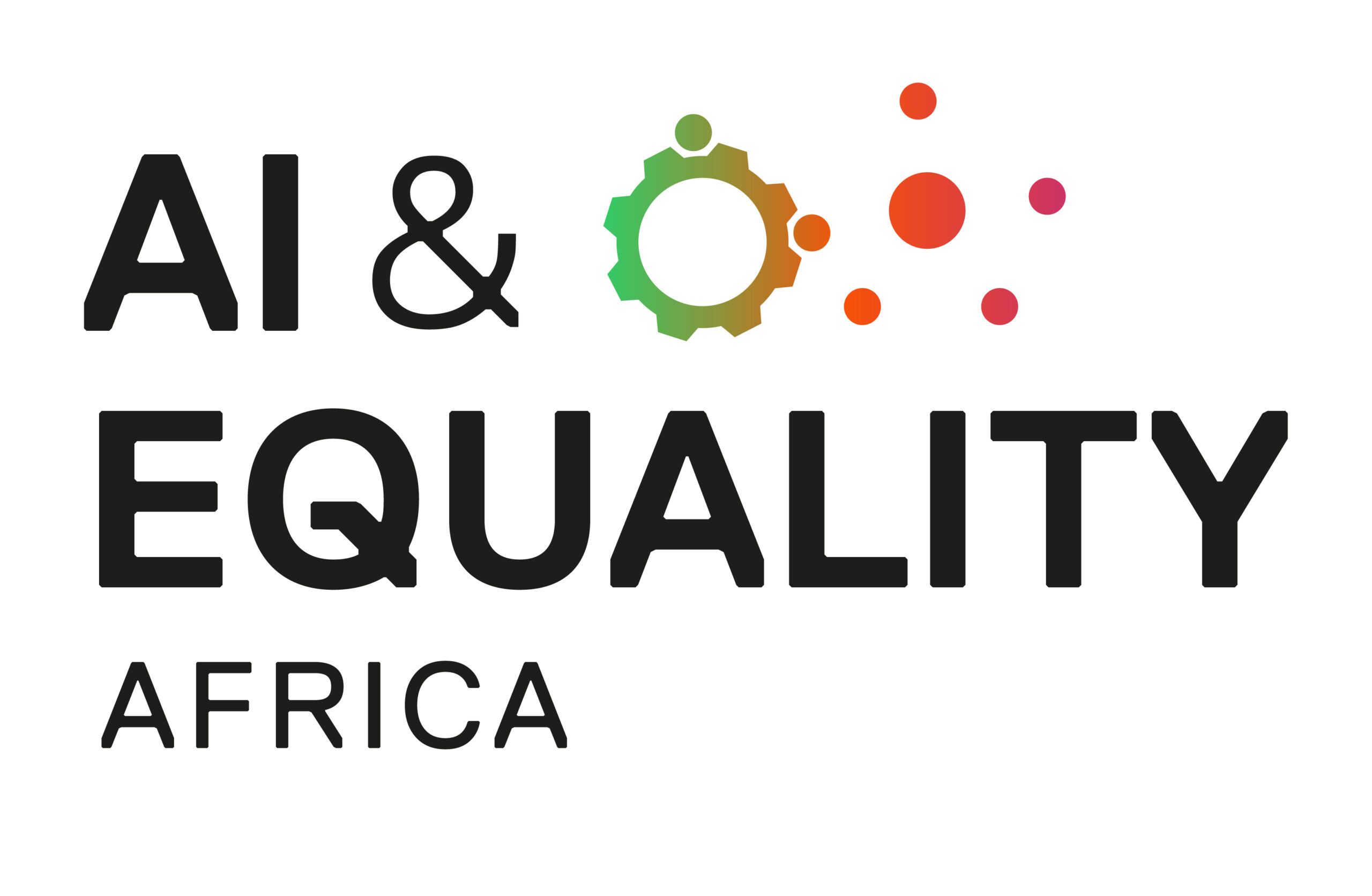
fA+Ir: NLP, Language & Locality
Bringing together NLP researchers from 4 regions of the world. This webinar is part of our global F<A+I>R Feminist AI Research Network global series in which we collectively think about […]

Bringing together NLP researchers from 4 regions of the world. This webinar is part of our global F<A+I>R Feminist AI Research Network global series in which we collectively think about […]

Ce webinar en français focalisera sur l'IA Francophone.

Francophone AI: Qu’est-ce que c’est?

In this webinar, we will be wrapping up the F<A+I>R Feminist AI Research Network of projects with the various members of our cohorts sharing on the journey of bringing their […]

In this open studio, Daniela Moyano will speak about Sof+IA: a prototype chatbot designed to report and provide guidance on Digital Gender Violence (DGV) in Chile. This evaluation examines its development through Data Feminism principles, highlighting how it challenges power structures, prioritizes survivor needs, and integrates emotion into technology design.

It is a well-known fact that LLMs express harmful biases in their predictions. The main source comes from the training datasets, which are too large and expensive to check thoroughly. In this open studio, Francesca Lucchini will explore how we can leverage the bias in LLMs and use them to examine massive datasets, discovering starting points for a data audit.

This launch webinar will present the methodology and the process of development of the toolbox featuring the contributors and introduce the webinar series that focus on each stage of the lifecycle with the selected case studies.

This webinar serves to explore Stage 1 of AI Development which is fundamentally a participatory and grounded approach which is crucial for centering gender equity, given that women often carry the brunt of labor in agriculture and caregiving, yet remain underrepresented in AI design and governance.

This webinar looks at how requirement setting should function as a bridge between vision and use: Aligning system features with cultural context, infrastructure gaps, and social expectations; Identifying constraints early on—connectivity, literacy, consent, power dynamics—and building around them and making conscious trade-offs between speed, scale, and equity.

AI & Equality partnered with the Chilean Centro Nacional de Inteligencia Artificial, CENIA, to co-construct a Latin American Spanish language version of the validated Toolbox, with use cases relevant to the regional experience.

This webinar will offer a deep dive into the Essential Questions of Data Discovery including a case study on the requirement for building effective TFGBV prevention datasets that include African languages.

This webinar dives into what inclusion and efficiency means ensuring the development or building of systems that don’t require technical expertise to interpret—ensuring that trust, oversight, and agency are accessible to all users. Whether a rural health worker, a student, or a community organizer, each person should be able to understand what a system is doing and why.